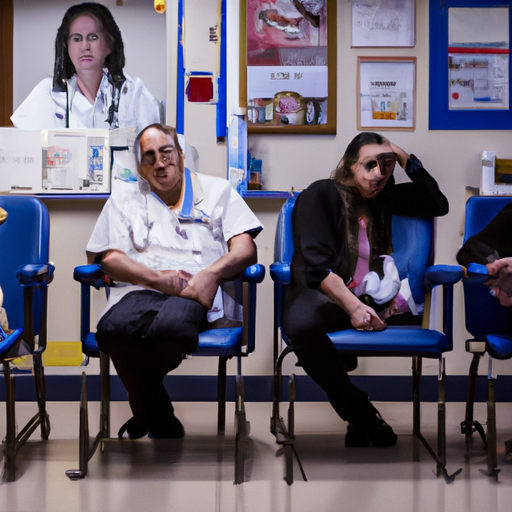Unpacking the Canadian Opioid Crisis: How Anti-Indigenous Bias Exacerbates the Situation
Today, we shine a spotlight on a critical aspect of the Canadian opioid crisis – the marginalization of indigenous communities and how this feeds into a vicious cycle of drug dependency, homelessness, and crime. This post discusses a timely article by APTN News that delves into the alarming issue of anti-indigenous bias in Canadian healthcare, specifically emergency departments, and how this less-than-ideal situation exacerbates the crisis.
The Situation Right Now
The opioid crisis in Canada has affected all demographics, but none more than the indigenous community. This is due in part to systemic healthcare biases which, as reported by APTN News, often lead to members of the indigenous community leaving emergency departments without being provided adequate care. This factor significantly contributes to the rise in opioid misuse among First Nations peoples.
Unpacking the Role of Anti-Indigenous Bias
Anti-indigenous bias in medical settings, whether implicit or explicit, deters the indigenous community from seeking timely medical help, especially for opioid addiction. When they do gather the courage to seek help, they are often faced with discrimination, inadequate treatment, or outright dismissal. All this forces many indigenous people onto a path of self-medication, often with the very opioids they sought help for, thus spiralling them deeper into addiction.
The Ripple Effects
This isn’t just an issue of healthcare bias. The ripple effects of this practice extend far beyond hospitals and into societal problems such as homelessness and crime. Lack of adequate treatment for opioid dependency among the indigenous community leads to a domino effect of problems. For instance, untreated addiction can, and often does, lead to unemployment, which invariably leads to homelessness. This often acts as a catalyst for a life of crime — a desperate, continuous bid for survival.
Key Takeaways from the APTN News Piece:
- Anti-Indigenous bias in Canadian healthcare, particularly in emergency departments, is rampant.
- Such bias often results in indigenous patients leaving hospitals without receiving due care.
- This trend significantly contributes to the already worrying rates of opioid addiction among the indigenous community.
- Unattended opioid issues among indigenous folks often culminate in dire societal problems like homelessness and crime.
Taking A Stand: Combatting the Crisis
In a bid to combat this crisis, various measures are now being implemented to fight opioid addiction in the indigenous community. Among these, the most critical include providing harm reduction services, promoting opioid class actions, and liberally distributing naloxone kits.
Harm reduction services such as needle exchanges and safe consumption sites offer a lifeline to those struggling with opioid addiction. These services provide a safer environment for drug use which, in turn, reduces the risk of death and disease.
Opioid class actions are aimed at providing compensation for indigenous communities disproportionately affected by the opioid crisis. The funds could help improve healthcare and social services for these communities. Lastly, naloxone kits are proving to be a game-changer. Fast-acting and life-saving, naloxone can reverse an opioid overdose in an emergency situation, buying precious time for medical attention.
Conclusion
The opioid crisis in Canada isn’t merely a problem of substance abuse; it’s a complex social issue tangled with healthcare bias, homelessness, crime, and widespread marginalization of the indigenous community. Yet, while the crisis reveals some deeply entrenched biases in Canada’s healthcare system, it also presents an opportunity for growth and change. Broadly distributing naloxone, promoting opioid class actions, and increasing the availability of harm reduction services are all crucial steps in the right direction. Fixing the healthcare biases is a lengthy journey, but one that Canada must embark on to ensure equitable health access for all its citizens.


